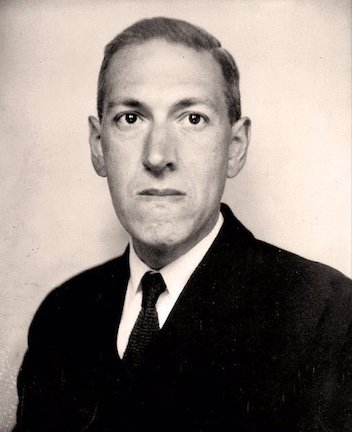Free League Publishing and Design Studio Press are proud to announce that the illustrated edition of the H.P. Lovecraft classic The Dunwich Horror is available now! With beautiful artwork from renowned artist François Baranger, the classic tale is now presented in its most visually stunning form yet.
Enter the desolate, decrepit Massachusetts village of Dunwich. Lost in the depths of the inhospitable countryside with its dark, bramble-covered valleys, ancient witch stories live on. Brace thyself, for this a tale of dark rituals, witchcraft and the looming shadow of the Old Ones.
The Dunwich Horror is a true classic of American horror and a dark tale of powers from beyond our world written by H.P. Lovecraft, a giant of horror literature and popular culture.
Since the 1920s, Lovecraft's short stories and novels have spellbound generations and influenced countless games, comics, novels, records, and films. His novella The Dunwich Horror, written in 1928 and first published in Weird Tales in 1929, is an absolute classic. Now, François Baranger presents the epic illustrated version of the story, a beautifully produced hardback book in the huge 262 X 350mm folio format, bringing Lovecraft's horror to life with lavish, full-spread images.
The critically acclaimed artist François Baranger was fascinated early on by Lovecraft's works that explore the darkest corners of human imagination. After dreaming about illustrated versions of Lovecraft's works for years, Baranger finally began to create his own vision of the Lovecraftian horror. He has previously interpreted the classics The Call of Cthulhu and At the Mountains of Madness, published by Free League in collaboration with Design Studio Press which received international praise.
ABOUT THE STORY:
In the remote Massachusetts village of Dunwich, lost in the depths of the inhospitable countryside with its dark, bramble-covered valleys, ancient witch stories live on, and strange underground noises sometimes echo beneath the hills topped by mysterious stone circles.
On an isolated farm in the area, the simple-minded Lavinia Whateley gives birth to a child, Wilbur, whose father is unknown. Old Whateley, Lavinia's father, raises Wilbur with the distrust of the locals, who are frightened by the child's rapid growth and repulsive face. Rumors of witchcraft have always circulated about old Whateley, and after his death, Wilbur, as an adult, seems determined to increase the ungodly knowledge that was passed to him.
To this end, he travels to Miskatonic University in Arkham to borrow the copy of the sinister Necronomicon that resides in its famous library. Professor Armitage, understanding the malicious intentions of his visitor, refuses to grant his request. Determined to get the book, Wilbur tries to break into the library at night, triggering a series of tragic events...
François Baranger is a multi-faceted artist and illustrator. He works primarily as a concept illustrator for films (Harry Potter, The Clash of the Titans, Beauty and the Beast) and computer games (Heavy Rain, Beyond: Two Souls). He has illustrated a number of book covers and written the two novels Dominium Mundi and The Domino Effect. Baranger has previously interpreted the Lovecraft classic The Call of Cthulhu and At the Mountains of Madness.
H.P. Lovecraft (1890-1937) is one of American literature's most influential authors, a giant of horror literature and popular culture. His reputation has grown over the years, and he has been praised by, among others, Stephen King and Guillermo del Toro. Lovecraft's cosmic horror touched on themes such as humanity's inadequacy and the horror of the incomprehensible and indifferent universe surrounding us. His characteristic prose, heavy on adjectives, grand imagination, and frantic storytelling technique have formed a school, and his legacy in popular culture is unprecedented. Along with Edgar Allen Poe, H.P. Lovecraft is one of the greatest horror writers of his time.







It assumes everyone watching must be a dimwit too dense to understand how the most basic storytelling concepts work.